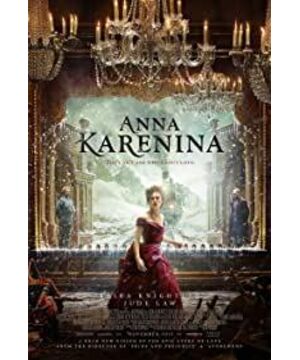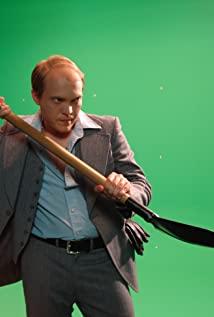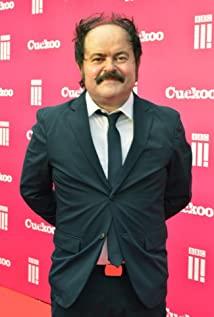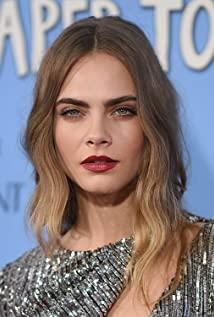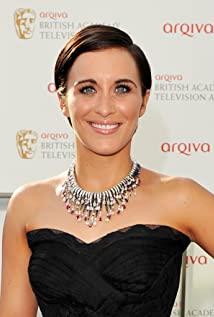I admit that, less than three minutes after the beginning of the movie, I have already traveled to the stage of a grand drama in St. Petersburg both physically and mentally. The word "amazing" can only be used to describe the moment when this new version of "Anna Karenina" opens.
The memory of reading the original is between the autumn nap in the first sophomore year. Hiding in the transparent mosquito net, listening to the slight breathing of the girls in the dormitory, feeling the grievances and happiness of Anna and Levin. The subtle changes in sentiment and the sudden rise and disappearance of contradictions, these most essential experiences have already followed the text, but I still want to say that the movie is very shocking.
What is shocking is not the plot (for viewers who have seen the original or the original film), but the various forms of breakthroughs and the integration of elements. It has been three days since I watched the movie, but during these three days I still remembered and made constant associations, and I had a desire to say and knock out my impressions.
The most worth mentioning in the first half is the new concept of "transitions". Most of the scenes were originally performed on the spacious and changeable stage of the theater, like a group of custom drama actors. Especially in the office of Anna's brother, the sense of ritual that directs the stamp into a uniform strength, implying that this movie is the first to explore postmodernism. Immediately afterwards, the theater slammed down the curtain, and between pushing and pulling, the two had arrived from the office to the British restaurant. There is no empty mirror that will become a pee point, and the "transition" itself has become a point of view. This technique often appears in the back, such as the moment when the angry Anna pulls down the curtains.
It seems that contemporary movies, like all other art forms, will gradually dry up after they have created their peaks. When Hollywood blockbusters use high-tech, surreal, and counter-logic American dreams to knock the audience down without exception, the form seems to have become a bitch. What do we always talk about when we talk about watching movies? Who starred? Visual senses?
Is it possible to find a piece of pure land to attract people's attention beyond the noisy limitations of transcending content and transcending commercial and literary contradictions? "Anna" gives the answer.
Of course, the starting point of this movie is very high. Far from Tolstoy's unshakable literary authority in his heavy original works, and near by Sophie Marceau's full interpretation of the classic and moving voice. In addition to the script itself, what other highlights are worthy of people's surprise after dinner? The solution is comprehensive.
Form, form, form. The only form that can surpass the classics is the combination of contemporary times. No matter how great a work is, it cannot be sure that it will be wonderful a hundred years later. This is the only way we can conquer the holy city. "Mixed-up" and "cross-border" seem to be nothing new in the art world. However, in the movie "drama", "Anna" is at least the first case where an ignorant person has been spread. At the same time, the new definition of montage has also surfaced as a buy one get one free, and it even gives the audience the illusion that all of this is at the moment of the live broadcast, and the editing is hidden in a seamless synthesis. In this way, it breaks through the stage beauty of the movie, revealing the structure in front of the camera as if returning to the basics, but it has a unique beauty like Bauhaus architecture.
When Anna was sitting next to our son's bed, we looked at the rococo frame-like layout, lest the heroine would immediately start singing the opera in a high pitch. I don’t know how many pictures are playing with the lights as beautiful as photography. Anna hides in the dark second floor and peeks at the mysterious beauty of the backlight when Volensky, Anna’s son lies on the small bed, a beam of chasing light condenses the parting of mother and son. Sadness.... And Anna and Volensky danced wildly at the dinner, the people around them were still like sculptures, they fluttered and sometimes like a domino effect of relief, sometimes the whole audience was sad and left alone. From time to time, the pomp and the glitz are full...All the protagonists' joy, confusion, helplessness, and madness are explained one by one between the real and the false.
Of course, there is the perfect combination of the Steadicam long lens and the music that have to be mentioned. Even audiences who don't know about film and television production will be deeply fascinated by these unsatisfactory picture melody! The great effect of photography can directly reach people's minds through technology, and it can easily give people a depressing or melodious visual effect. In "Anna", on the premise of understanding the metaphysical theme of Toon's original text, these skills are fully utilized.
If there is only form, the film is nothing remarkable, but what is amazing is not only the transformation of artistic expression, but also the precise control of the original work itself, and the fullness of innovation in the plot. The rumbling train, not only the props but also the sound, is a symbolic wake-up call. As soon as the little train combined with Anna's son's toys comes in and out, the historical drama suddenly becomes as cute and amiable as installation art. There is also an alphabet game that was used to relieve the past when Levin and Giti reunited. The original book does not seem to be so naive and unique (but I really don’t remember the specific features of this section of the novel). The ingenious fit, two kind and shy young people, nothing is more logical and tender than the confession of spelling combinations.
What I like most about the movie is the few location scenes, all of which are light and fresh sky and green spaces. In the grass and in the sea of flowers, Anna's figure is very beautiful in "The Woman with a Parasol", and the mood and tone of the mood are full of the handwriting of the young Monet. Ending echoes the appearance of a young daughter Anne staggering, which seems to herald a new round of love and poetic pursuit is coming.
View more about Anna Karenina reviews


